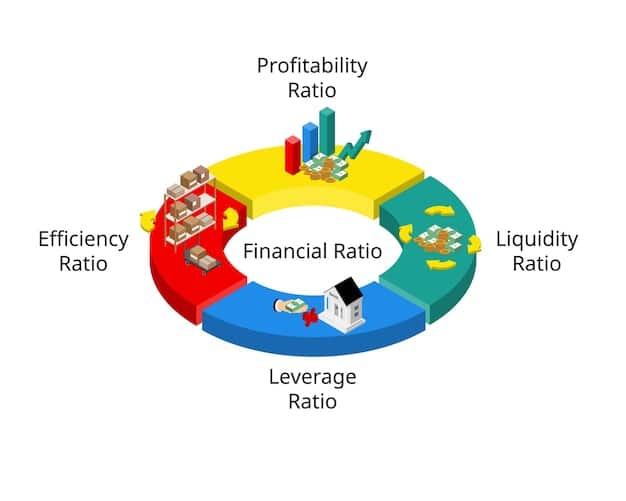Tax-Smart Investing: Minimize Capital Gains Taxes in 2025

Tax-smart investing involves strategically managing your investments to minimize capital gains taxes, potentially increasing your after-tax returns in 2025 through methods like tax-loss harvesting, utilizing tax-advantaged accounts, and optimizing asset allocation.
Navigating the complexities of investment taxes can significantly impact your wealth accumulation. Tax-smart investing: How to minimize capital gains taxes in 2025 is essential for maximizing returns and building a secure financial future.
Understanding Capital Gains Taxes
Capital gains taxes are levied on the profit you make from selling an asset, such as stocks, bonds, or real estate. Understanding how these taxes work is the first step in minimizing their impact on your investment returns.
These taxes are triggered when you sell an asset for more than what you originally paid for it. The difference between the purchase price (or “cost basis”) and the selling price is your capital gain. However, not all capital gains are taxed equally.
Short-Term vs. Long-Term Capital Gains
Capital gains are categorized into short-term and long-term, based on how long you held the asset before selling it.
- Long-term capital gains apply to assets held for more than one year and are taxed at lower rates than short-term gains. Depending on your income, these rates can be 0%, 15%, or 20%.
- Short-term capital gains apply to assets held for one year or less and are taxed at your ordinary income tax rate, which can be significantly higher, ranging from 10% to 37% in 2025.
Understanding the holding period is crucial for tax planning. Aim to hold assets for longer than a year whenever possible to take advantage of the lower long-term capital gains rates.
Capital gains taxes can significantly reduce your investment returns. Strategies to minimize these taxes can help retain more of your investment gains, ultimately boosting your financial outcomes.
Tax-Advantaged Accounts
Utilizing tax-advantaged accounts is one of the most effective strategies for reducing capital gains taxes. These accounts offer various tax benefits that can help you minimize your tax liability.
These accounts include 401(k)s, Traditional IRAs, Roth IRAs, and 529 plans. Each offers unique tax advantages, such as tax-deferred growth or tax-free withdrawals, making them powerful tools for tax-smart investing.
Types of Tax-Advantaged Accounts
Each account type offers unique benefits, and the best choice depends on your individual financial situation and goals.
- 401(k)s: Typically offered through employers, 401(k)s allow you to contribute pre-tax dollars, reducing your current taxable income. The investments grow tax-deferred, and withdrawals are taxed in retirement.
- Traditional IRAs: Similar to 401(k)s, Traditional IRAs offer tax-deductible contributions and tax-deferred growth. Withdrawals are taxed as ordinary income in retirement.
- Roth IRAs: Contributions to Roth IRAs are made with after-tax dollars, but the investments grow tax-free, and withdrawals in retirement are also tax-free.
- 529 Plans: These are designed for education savings, offering tax-free growth and withdrawals when used for qualified education expenses.
By strategically using these accounts, investors can significantly reduce their overall tax burden and maximize their investment returns.

Choosing the right tax-advantaged account can have a substantial impact on your long-term investment success. Consider your current income, future tax bracket, and investment goals when deciding which accounts to utilize.
Tax-Loss Harvesting
Tax-loss harvesting is a strategy that involves selling investments at a loss to offset capital gains. This can significantly reduce your tax liability and improve your overall investment returns.
This strategy can be particularly effective during market downturns, when you may have losses in your portfolio. By strategically selling these losing investments, you can offset gains and potentially reduce your tax bill.
How Tax-Loss Harvesting Works
The process involves selling investments that have decreased in value and using the losses to offset any capital gains you’ve realized during the year.
- Identify losing investments in your portfolio.
- Sell those investments to realize the capital losses.
- Use the losses to offset capital gains, reducing your tax liability.
- If your capital losses exceed your capital gains, you can deduct up to $3,000 of the excess loss from your ordinary income each year. Any remaining loss can be carried forward to future tax years.
However, be mindful of the wash-sale rule, which prevents you from repurchasing the same or a substantially identical investment within 30 days before or after the sale. This rule is designed to prevent investors from artificially creating losses for tax purposes.
Tax-loss harvesting is a powerful strategy for managing capital gains taxes, but it requires careful planning and attention to detail. Consider consulting with a tax professional to ensure you’re implementing the strategy correctly and in compliance with all applicable tax laws.
Asset Allocation Strategies
Strategic asset allocation can play a significant role in minimizing capital gains taxes. By carefully structuring your portfolio, you can reduce the frequency of taxable events and optimize your after-tax returns.
This involves holding certain types of assets in tax-advantaged accounts and others in taxable accounts. The goal is to place assets that generate the most taxable income in tax-advantaged accounts, while holding assets with lower tax implications in taxable accounts.
Placement of Assets
Consider where different asset types are held to minimize tax impact.
- Tax-Advantaged Accounts: Hold assets that generate high taxable income, such as high-yield bonds or actively managed mutual funds, in tax-advantaged accounts like 401(k)s or IRAs. This allows the income to grow tax-deferred or tax-free.
- Taxable Accounts: Hold assets that generate lower taxable income, such as stocks or index funds, in taxable accounts. These assets tend to appreciate in value over time, and the capital gains taxes are only triggered when you sell the assets.
Rebalancing your portfolio is a crucial part of maintaining your desired asset allocation. However, rebalancing can trigger capital gains taxes if you sell appreciated assets in a taxable account. Consider the tax implications before rebalancing and explore tax-efficient methods, such as using new contributions to rebalance or swapping similar assets.

Careful asset allocation can significantly reduce your exposure to capital gains taxes. Regularly review your asset allocation strategy and make adjustments as needed to optimize your after-tax investment returns.
Qualified Opportunity Zones
Qualified Opportunity Zones (QOZs) are designated areas designed to spur economic development and job creation in distressed communities. Investing in these zones can provide significant tax benefits, including deferral and potential elimination of capital gains taxes.
This can be achieved by investing capital gains into Qualified Opportunity Funds (QOFs), which then invest in businesses or properties within the QOZs. These investments can offer long-term tax advantages, making them an attractive option for tax-smart investors.
Tax Benefits of QOZs
Investors can defer capital gains taxes by investing existing gains into a QOF within 180 days of the sale that created the gain.
The tax benefits include:
- Temporary Deferral: Capital gains taxes are deferred until the QOF investment is sold or until December 31, 2026, whichever comes first.
- Tax Reduction: If the QOF investment is held for at least five years, the basis of the original capital gain is increased by 10%. If held for at least seven years, the basis is increased by an additional 5%, resulting in a 15% reduction in the original capital gain.
- Tax Elimination: If the QOF investment is held for at least ten years, any capital gains generated by the QOF investment itself are permanently excluded from taxation.
Investing in QOZs can provide significant tax benefits, but it also involves risks associated with investing in developing areas. Be sure to conduct thorough due diligence and consult with a financial advisor before investing in QOZs.
Qualified Opportunity Zones offer unique tax advantages for investors willing to invest in distressed communities. While these investments come with risks, the potential tax benefits can make them a valuable addition to a tax-smart investment strategy.
Staying Informed and Seeking Professional Advice
Tax laws and regulations are constantly evolving, making it essential to stay informed and adapt your investment strategies accordingly. Additionally, seeking professional advice from a qualified financial advisor or tax professional can help you navigate the complexities of tax-smart investing.
Keeping up-to-date with the latest tax changes and understanding their potential impact on your investments is crucial for effective tax planning. Numerous resources are available to help you stay informed, including IRS publications, financial news outlets, and professional advisors.
The Value of Personalized Guidance
Engaging a financial advisor or tax professional can provide personalized guidance tailored to your specific financial situation and goals.
- Personalized Strategies: A professional can help you develop a customized tax-smart investment strategy that aligns with your financial objectives and risk tolerance.
- Up-to-Date Knowledge: Tax laws are complex and subject to change. A professional can ensure you’re up-to-date with the latest regulations and taking advantage of all available tax-saving opportunities.
- Peace of Mind: Knowing that you have a trusted advisor guiding you through the complexities of tax-smart investing can provide peace of mind and help you make informed financial decisions.
Tax-smart investing is an ongoing process that requires continuous monitoring and adjustments. Stay informed about tax law changes, review your investment strategies regularly, and seek professional advice when needed to maximize your after-tax investment returns.
Staying informed and seeking professional advice are essential components of a successful tax-smart investing strategy. By combining your knowledge with expert guidance, you can effectively minimize capital gains taxes and achieve your financial goals.
| Key Point | Brief Description |
|---|---|
| 💰 Tax-Advantaged Accounts | Use 401(k)s, IRAs, and 529 plans for tax benefits. |
| 📉 Tax-Loss Harvesting | Offset gains by selling losing investments. |
| 📊 Asset Allocation | Strategically place assets to minimize tax impact. |
| 🏘️ Qualified Opportunity Zones | Invest in QOZs for potential tax deferral/elimination. |
Investing FAQs
▼
Capital gains taxes are taxes on the profit from selling an asset, like stocks or real estate, for more than its original purchase price. These taxes can significantly impact your investment returns.
▼
Tax-loss harvesting involves selling investments at a loss to offset capital gains. You can deduct up to $3,000 of excess losses from your ordinary income annually, carrying forward any remaining loss.
▼
401(k)s, Traditional IRAs, Roth IRAs, and 529 plans offer various tax benefits. Roth IRAs provide tax-free withdrawals in retirement, while 401(k)s offer pre-tax contributions.
▼
Investing in Qualified Opportunity Funds in designated zones can defer or eliminate capital gains taxes. Holding the investment for at least ten years can exclude gains from taxation.
▼
A financial advisor or tax professional can provide personalized guidance, keep you updated on changing tax laws, and help you create a tailored tax-smart investment plan.
Conclusion
Effectively minimizing capital gains taxes in 2025 requires a proactive and informed approach. By understanding tax laws, utilizing tax-advantaged accounts, employing tax-loss harvesting, strategically allocating assets, and staying informed, you can significantly enhance your after-tax investment returns and build a more secure financial future. Consider consulting with a financial advisor to tailor these strategies to your specific circumstances.





